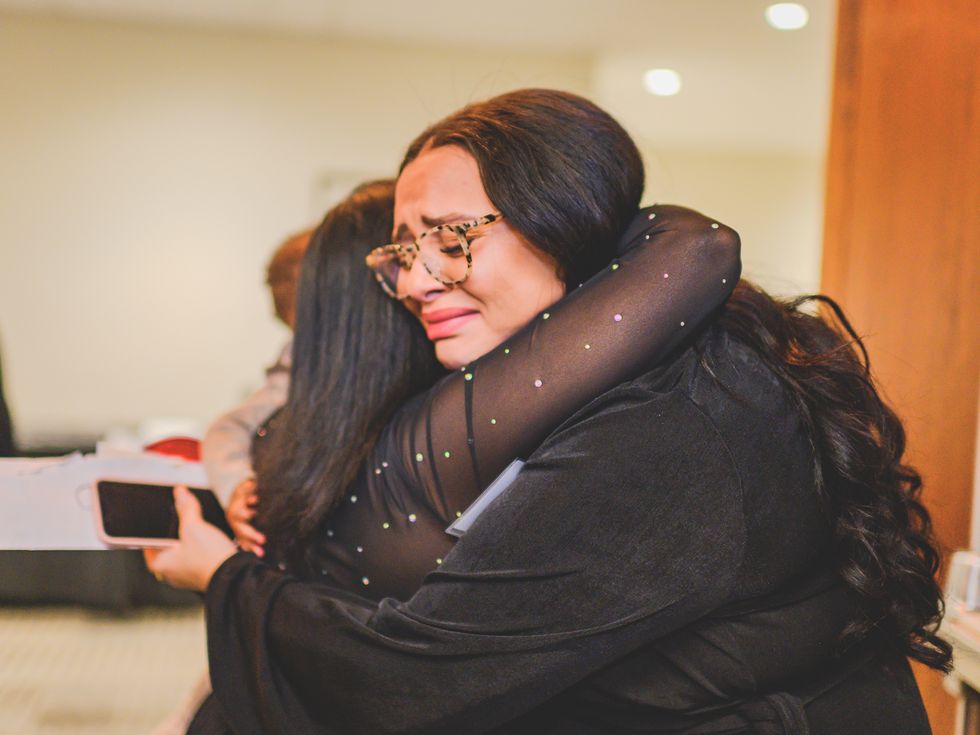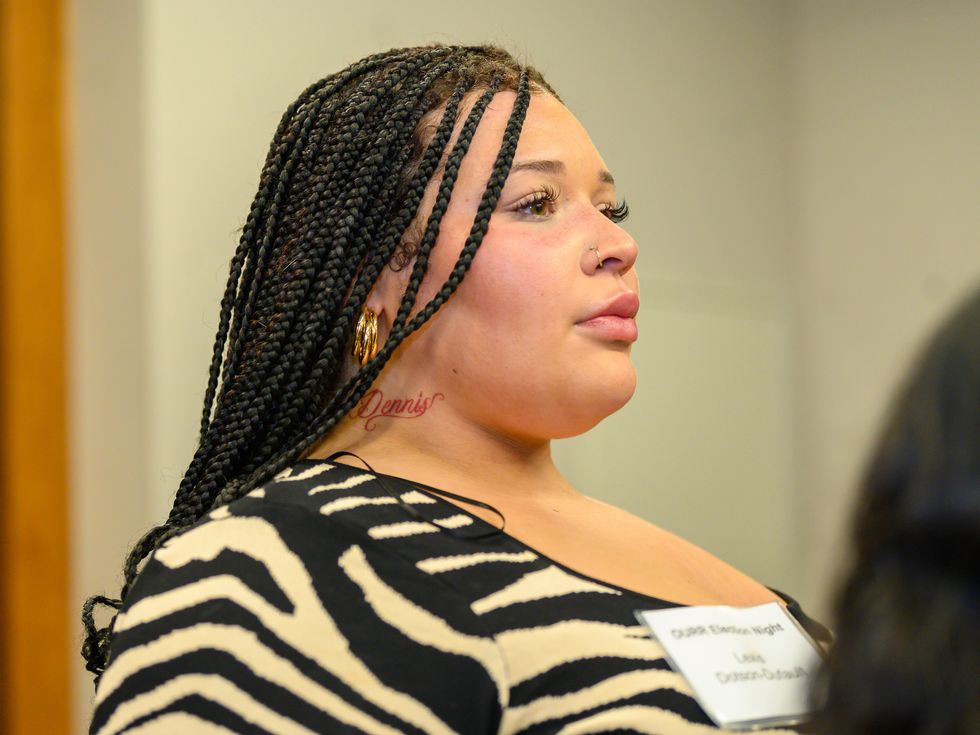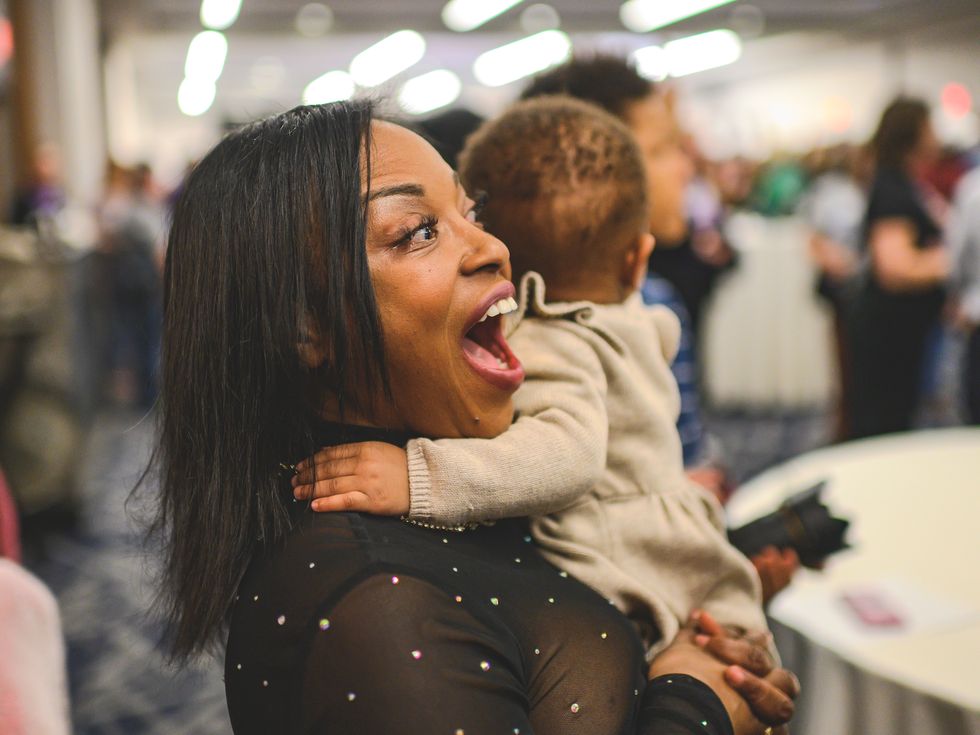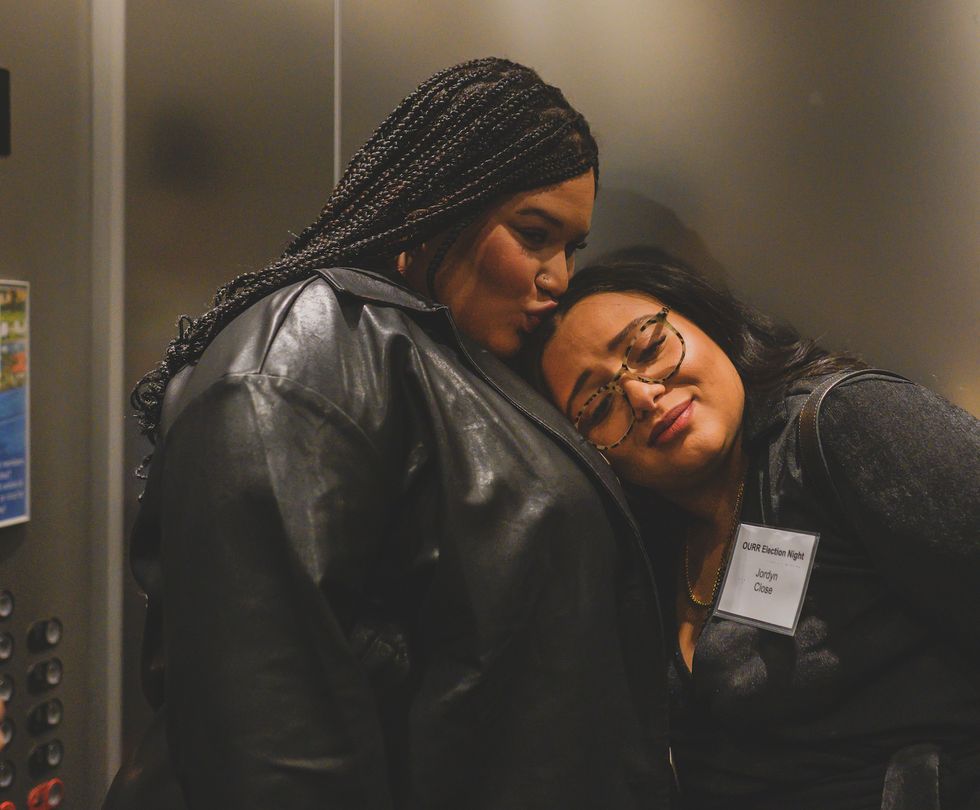The Black Women Who Fought for Ohio’s Historic Abortion Win
This year, on November 7, Ohio voters made history. In a statewide vote, constituents approved a constitutional amendment that will guarantee access to abortion and other reproductive health care, making it the seventh state in the nation where voters have protected abortion access since the Supreme Court overturned Roe v. Wade last June, per the Associated Press. The victory came just a few months after a special election in which Ohio voters also rejected a Republican-backed measure that would’ve made changing the state’s constitution even more difficult—a move many believed was a deliberate attempt to derail the proposed amendment.
The citizen-led ballot measure, known as Issue 1, was backed by Ohioans United for Reproductive Rights (OURR), a coalition of reproductive health, rights, and justice organizations working to protect Ohioans’ control over their own reproductive freedom. While big legacy organizations within the coalition were heavily involved in knocking on doors and ensuring voter turnout, it was the Ohio Women’s Alliance—one of the only Black-led organizations in OURR—that led a huge field program, reaching out to more than 1.3 million young, female, and BIPOC voters across the state.
And exit polls have shown those efforts were essential; when it came time, 60 percent of female voters, 83 percent of Black voters, and 77 percent of voters under 30 voted yes on the issue. A week after the win, Jordyn Close, deputy director of Ohio Women’s Alliance and a We Testify abortion storyteller, told ELLE.com that, to her, the exit polls make it clear: this moment wouldn’t have been possible without Black and brown advocates, organizers, and voters.
“We talked to voters about the impact this issue has on our Black and brown communities, especially considering the horrific maternal mortality rates for Black mothers in Ohio,” Close explained. OWA also fought to include abortion storytellers of color, who have been affected by restrictions, in the ballot campaign. “Black and brown voters are often discounted as a voting block that is disenfranchised, doesn’t turn out, and isn’t interested in issues like reproductive freedom. Issue 1 has proven that isn’t the case. When you give Black and brown people something real and tangible to vote for, we will turn out, because we know very intimately what our communities need to be safe and healthy.”
The success of Issue 1 also demonstrates what many advocates have been saying for decades: contrary to federal and state efforts to gut abortion access, most Americans aren’t in favor of restrictive bans and, if given the chance, will vote accordingly.
Hours after the Supreme Court overturned Roe in June 2022, a six-week abortion ban went into effect in Ohio, making it one of the first states to restrict abortion following the ruling. The same law forced a 10-year-old rape victim to travel to Indiana to obtain an abortion, and the ban remained in effect for 82 days before being blocked by the courts. For Lexis Dotson-Dufault, a patient navigation manager at Abortion Fund of Ohio and a We Testify abortion storyteller, it was a devastating time. “It was heartbreaking seeing the barriers people had to face to access time-sensitive, necessary health care,” she said. After all, abortion restrictions don’t stop people from needing or seeking abortions; restrictions only make the process more difficult to navigate.
“Those 82 days when we faced an almost-total abortion ban were some of the worst months of my life,” she continued. “I had to call every patient who had made an appointment and tell them they were no longer able to get abortion care in their home state and their appointments would be canceled.”
These days, Dotson-Dufault and her team are dealing with a different kind of burden. Because many Southeast and Midwest states have severe abortion restrictions in place, more and more patients have been forced to seek care in Ohio, including from neighboring states like Kentucky, Indiana, and West Virginia. “We have never seen as many patients needing support as we have this year,” she said. According to Dotson-Dufault, in the first 10 months of 2023, Abortion Fund of Ohio served over 3,500 patients and funded almost $1.5 million in direct financial support for appointments or practical support. In comparison, she explained, in all of 2022, the abortion fund saw 1,700 patients and funded a little over $400,000.
Of course, bans and restrictions contribute to these higher costs. The longer patients delay care—due to needing to travel, take time off, secure childcare, raise funds, or find an appointment in busy clinics—the further along they are in the pregnancy, the more expensive abortion care becomes, and the more difficult it is to find. “Abortion access being protected in Ohio’s constitution is a huge win for access not only in the Midwest, but the entire country,” Dotson-Dufault noted.
Even so, organizers made it clear to voters that this amendment also went beyond abortion access. Rhiannon Carnes, co-founder and executive director of Ohio Women’s Alliance, explained that local leaders used a reproductive justice lens when it came to the ballot measure. A feminist framework developed by Black women in the ’90s, the three core values of reproductive justice are the right to have a child, the right to not have a child, and the right to parent children in safe and healthy environments.
“We had a heavy hand in the messaging and narrative that was going to our community,” Carnes said. “It wasn’t solely about abortion. It was about our communities having access to the things they need to thrive without fear of criminalization. That includes having access to the full spectrum of reproductive health care services, and that is why we worked closely with the ballot committee to ensure the language was as inclusive as possible. Voters were able to see that.”
For Carnes, the ballot measure’s success is also a testament to why it’s essential to acknowledge the labor of Black and brown people within the movement. “I fought and broke through so many doors for historically marginalized people, like Black and brown women, who have been routinely left out of conversations about reproductive freedom, to have a voice in this campaign,” she continued. “The Ohio Women’s Alliance was one of only two Black-led organizations represented in the coalition, and I was the only Black woman on the executive committee for the campaign. If people of color do not have people in the rooms representing and advocating for us, how will people begin to understand what we need?”
As for what’s next for the Ohio Women’s Alliance, Carnes said the organization will continue to protect the right to abortion access and invest in the collective well-being of Ohioans. But right now? “I am honestly going to try to relish in this moment.”
Larada Lee-Wallace is a California-based organizer, storyteller, writer, doula, advocate, and reproductive justice practitioner. She currently serves on the board of directors for California’s only statewide abortion fund, ACCESS Reproductive Justice, and as the State Campaign Manager for Abortion Access at Advocates for Youth. She also contributes to We Testify, an organization dedicated to the leadership and representation of people who have abortions, increasing the spectrum of abortion storytellers in the public sphere, and shifting the way the media understands the context and complexity of accessing abortion care.





